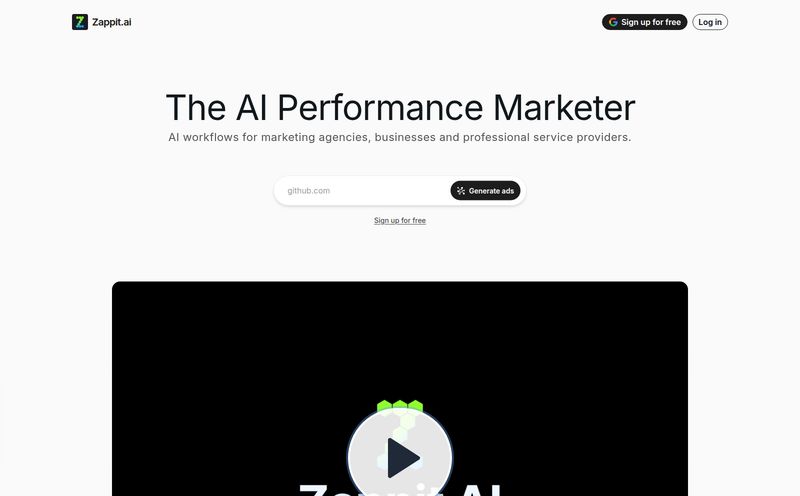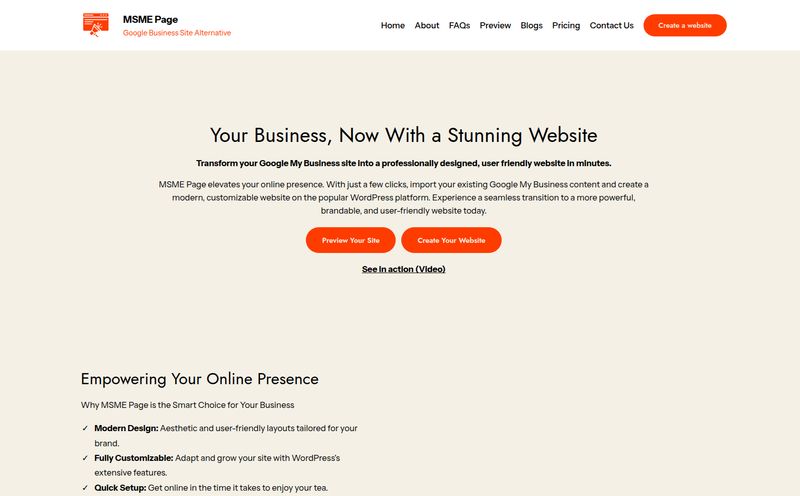If you’re a microstock contributor, there’s a part of the job you probably dread. No, it’s not the rejections (though those sting). It’s the keywording. Oh, the keywording. It's the digital equivalent of doing your taxes—necessary, tedious, and you're always sure you're doing it wrong.
I’ve lost entire Sundays to a folder of 100 photos, my brain melting as I try to come up with 50 unique tags for a picture of a laptop on a wooden desk. “Desk... wood... laptop... technology... work from home...” It’s a creative drain. I’d rather be out shooting, you know? So when I stumbled upon a tool called Stockfill, which claims to automate this whole mess with AI, my first thought was, “Yeah, right.” But my second thought was, “...please let this work.”
So I jumped in, credits in hand, to see if this thing is actually the answer to our collective prayers or just another shiny object in the ever-growing world of AI tools.
So What is Stockfill, Really?
In simple terms, Stockfill is an AI-powered assistant built specifically for people like us: stock photographers and illustrators. You feed it your image (a JPG, PNG, or even a WEBP file), and it spits back a suggested title, a description, and a list of keywords. The homepage mentions it’s trained by contributors from big-name platforms like Shutterstock, Adobe Stock, and Freepik. That tells me it’s not just scraping random data; it's supposedly learning from what actually works on the sites we use every day.
It's designed to take the grunt work out of preparing your images for submission. Less time typing, more time for... well, anything else.
First Impressions and Getting Started
Getting started is, and I dont say this lightly, incredibly simple. There’s no clunky software to install. You just go to the website. The interface is clean, dark, and straight to the point. You see a big area that practically begs you to drag and drop a file.

Visit Stockfill
So I did. I grabbed a photo from a recent shoot—a classic “creative professional working in a modern office” shot. I dropped it in, and for a few seconds, a little processing icon did its thing. I was half-expecting a list of generic tags like “person” and “building.”
What I got back was... surprisingly good. The title was something like “Focused Male Designer Working on a Laptop in a Bright Coworking Space.” The keywords included things like “entrepreneur,” “startup culture,” “concentration,” “digital nomad,” and “project management.” These were terms my tired brain wouldn't have come up with at 11 PM on a Sunday. It wasn't just describing the image; it was describing the concept behind the image. Color me impressed.
The Good Stuff: Where Stockfill Shines
After playing with a dozen more images, from isolated objects on a white background to complex lifestyle scenes, a few things really stood out.
Time-Saving is a Massive Understatement
This is the big one. The main event. The time I would normally spend agonizing over metadata was cut by, I’d estimate, 90%. I went from spending 5-10 minutes per image to about 30 seconds. Most of that time was just me reviewing the AI's suggestions and maybe tweaking a word or two. It’s not just about getting the job done faster; it’s about reclaiming creative energy. It turns a chore into a quick check-and-approve process.
The AI Mostly Gets It
Look, no AI is perfect. I uploaded a slightly abstract photo of light trails, and it got a little confused. But for 9 out of 10 standard commercial stock photos? It's scarily accurate. It correctly identifies concepts, moods, and potential uses for the image, which is the secret sauce for getting your photos discovered. Remember that red apple problem? The AI might suggest things like “healthy eating,” “teacher’s gift,” “Snow White,” “Newton’s law,” or “crisp snack.” It thinks outside the box so you dont have to.
A Simple, No-Fuss Approach
I appreciate that Stockfill does one thing and does it well. There aren't a million confusing features or settings. It supports the file types we all use, and the output is easy to copy and paste right into your stock agency’s submission form. It’s a tool built for a specific purpose, and it respects your time.
Let's Talk Money: The Stockfill Pricing Model
Alright, this isn't free. It runs on a credit system, which I actually prefer over another monthly subscription draining my bank account. You buy a pack of credits, and one credit is used for one image analysis. Simple as that.
Here’s the breakdown as of my review:
| Plan | Credits | Price | Cost Per Image |
|---|---|---|---|
| Silver | 100 | $0.99 | ~$0.01 |
| Gold | 500 | $3.99 | ~$0.008 |
| Platinum | 1,000 | $5.99 | ~$0.006 |
The best part? The credits never expire. This is huge. You can buy a pack and use it over six months or a year without worrying about a deadline. For someone like me, whose upload volume varies, this is perfect. There’s also a “Free” option on their pricing page, which likely gives you a few free credits to test the waters before you commit, which is always a good sign.
The Not-So-Perfect Bits
I wouldn’t be giving you an honest review without pointing out the downsides. First, while it's cheap, it isn't free. If you upload thousands of images a month, that cost, while small, will add up. You have to decide if the time saved is worth the pennies-per-image cost.
Second, as I mentioned, the AI isn’t a mind reader. It’s a tool, not a replacement for your brain. You still need to give the results a quick once-over. Sometimes it misses the main subject or suggests a weird keyword. A human touch is still required to get it from 95% perfect to 100% ready. But honestly, I'd rather be an editor than a writer in this scenario any day of the week.
My Final Verdict: Is Stockfill Worth It?
After a week of using it, my workflow is noticeably faster. That initial dread I felt when looking at a folder of un-keyworded images is gone. It's been replaced with a weird sense of... ease.
So, is Stockfill worth it? For me, it’s a resounding yes. If you’re a high-volume microstock contributor or just someone who truly, deeply despises the keywording process, the small cost is an absolute bargain for the time and sanity you get back. It's a sharp, effective tool that solves one of the most annoying problems in the stock photography world.
If you're uploading one or two photos a month, you might be fine continuing on your own. But for anyone serious about making a go of stock photography, I think Stockfill, or a tool like it, is going to become an indispensible part of the process. It just makes sense.
Frequently Asked Questions about Stockfill
- What exactly is Stockfill?
- Stockfill is a web-based tool that uses artificial intelligence to automatically generate titles, descriptions, and keywords for your stock photos and illustrations.
- How does Stockfill's pricing work?
- It's a pay-as-you-go system. You buy credits in packs (e.g., 100, 500, or 1,000). One credit is used to process one image. The credits you buy never expire.
- How accurate is the AI?
- In my experience, it's very accurate for most commercial stock imagery, often providing conceptual keywords that you might not think of. However, for very abstract or unusual images, it can sometimes miss the mark. It's best to always do a quick review.
- Can I try Stockfill for free?
- The website has a "Free" plan option, which typically means you get a small number of free credits to try out the service and see if it works for you before purchasing a credit pack.
- What file formats does Stockfill support?
- It supports the most common formats for stock imagery, including JPG, PNG, and WEBP.
- Is it useful for sites like Shutterstock and Adobe Stock?
- Yes, absolutely. The AI is trained on data from contributors to major stock sites, so the metadata it generates is well-suited for these platforms.



